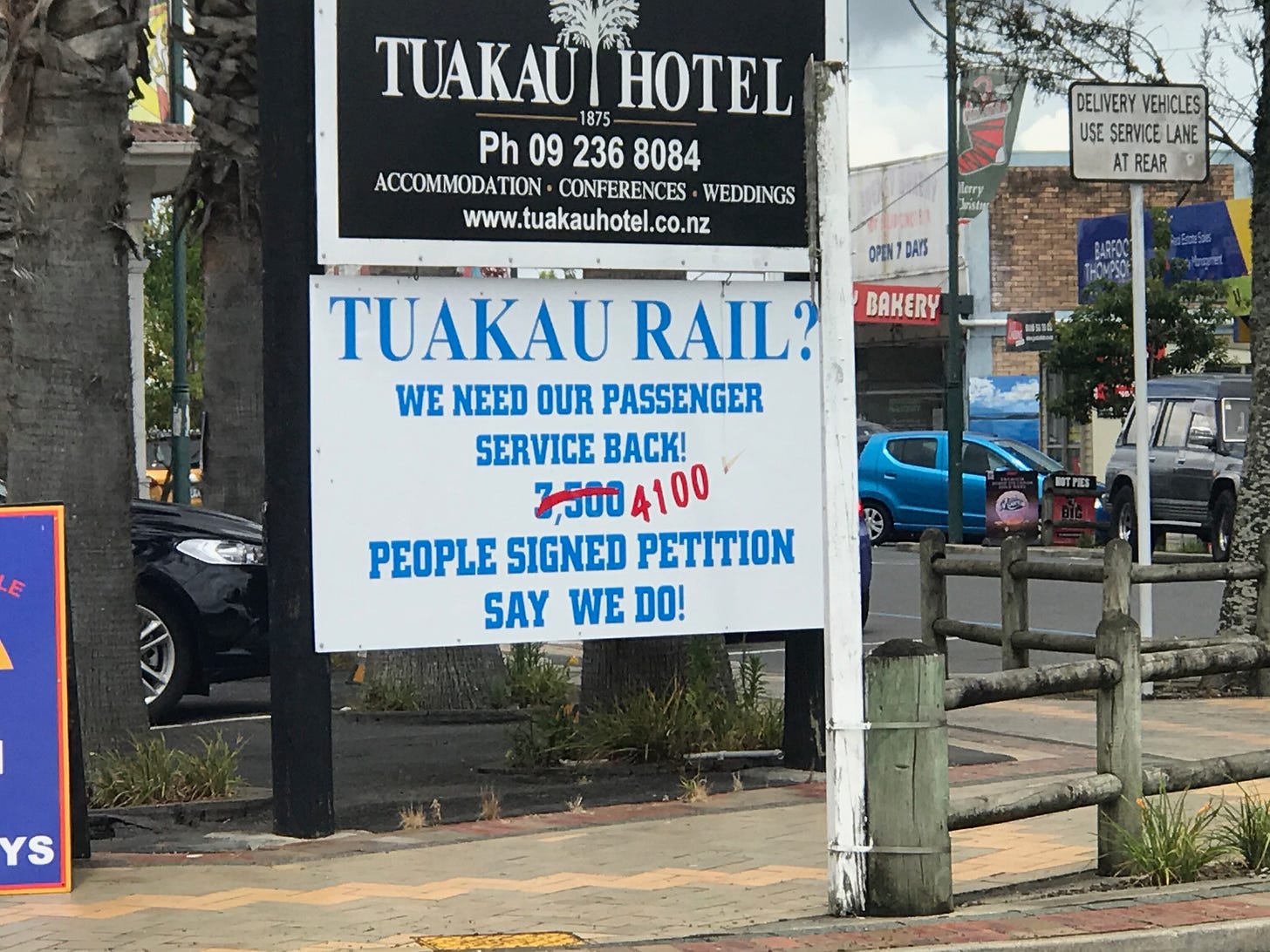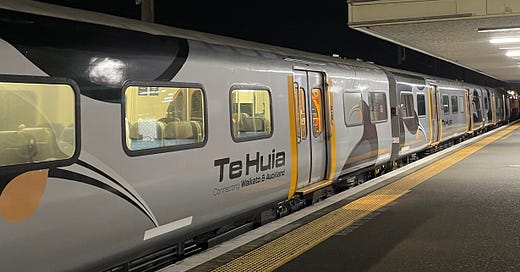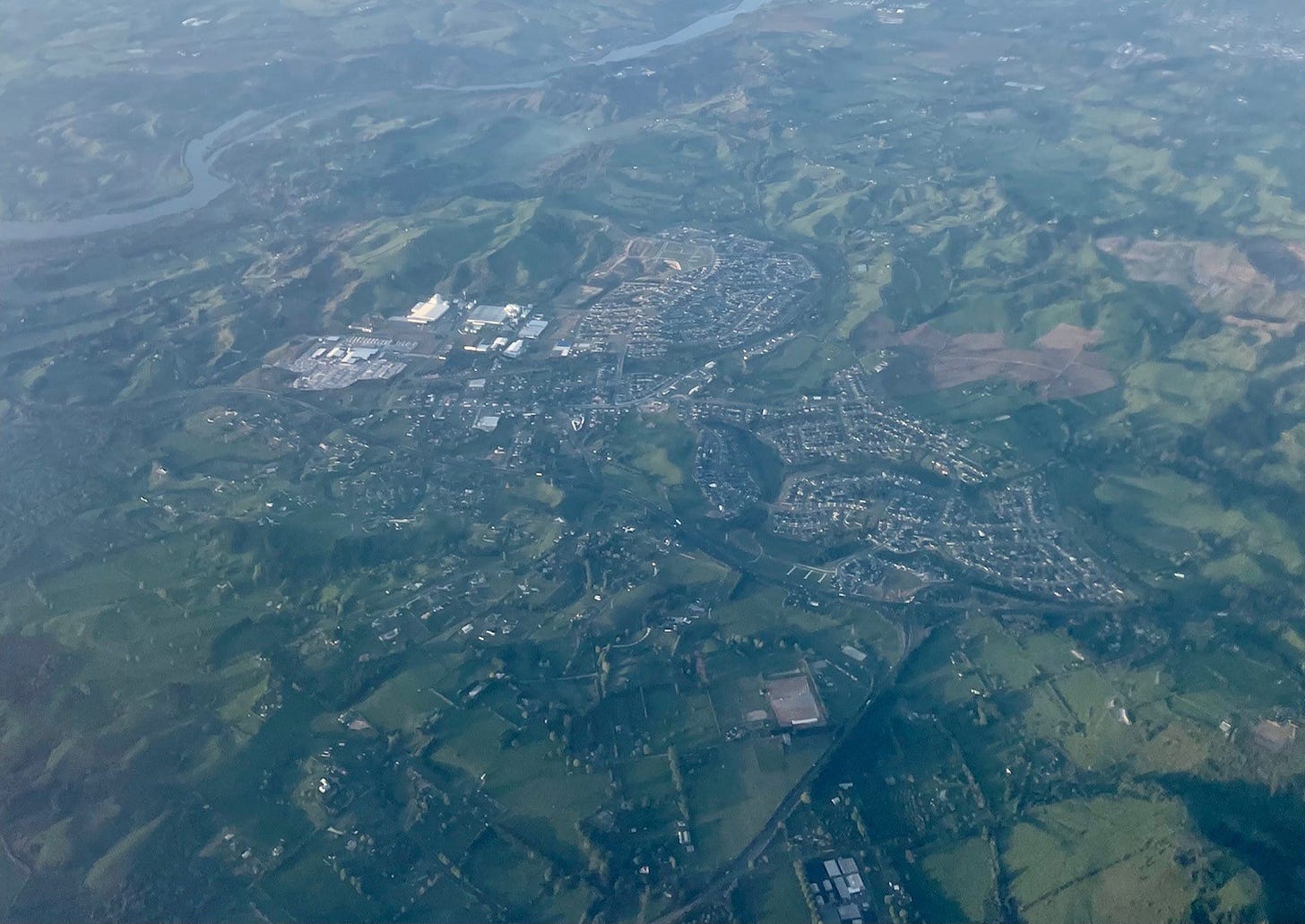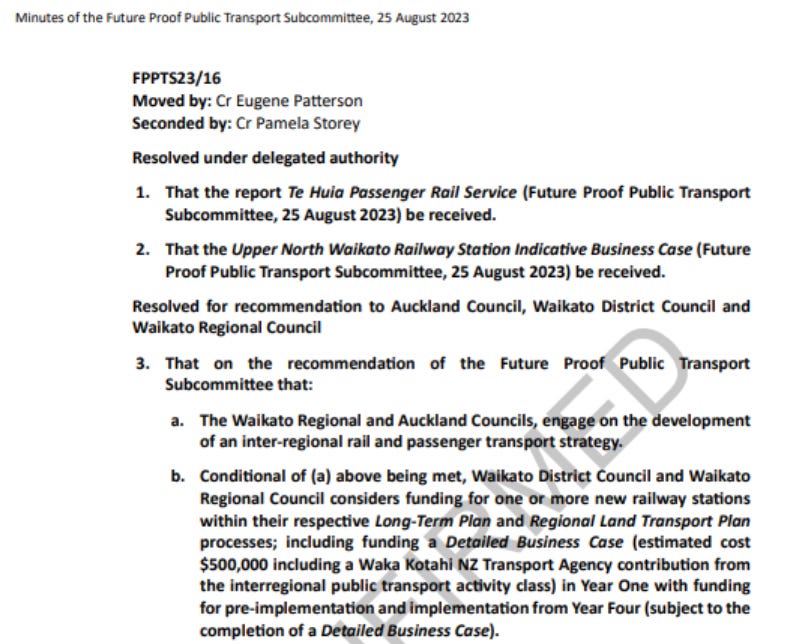New train stations for the Upper North Waikato?
Plans are proceeding for additional train stations for Te Huia in the Upper North Waikato. Here's an update on where this work has got to.
Up in the Upper North Waikato
A business case wrapped up in August 2023 into additional station stops for Te Huia in the Upper North Waikato at Te Kauwhata, Pōkeno and Tūākau. These station stops are all closer to Auckland than any of the current Te Huia station stops. In particular, Pōkeno has grown very strongly, with a larger number of people who commute to work in Auckland, while significant growth is planned for Te Kauwhata and more modest growth in Tūākau.
Work on this business case has been reported to community boards such as Pōkeno and Tūākau and to the Waikato District Council and Waikato Regional Council. But before we dive into the detail, let’s look at some of these opportunities to provide fast-growing communities in the North Waikato with access to existing and future rail services.
The story of the stations
In 2005, Pōkeno had a population of just 500. By 2021, that number had increased by 341% to 5,545 with growth continuing unabated. According to 2018 Census data, 666 Pōkeno residents commuted to work in Auckland, a number that has likely significantly increased since then. At present, the first bus from Pōkeno at 6:10am would get you to Waitematā/ Britomart Station in Auckland City Centre at 8:46am by connecting to another bus at Pukekohe which connects to the train at Papakura, while Google Maps estimates a car travel time of up to 2 hours and 10 minutes, which is not much better. The Te Huia Hamilton to Auckland train passes through but does not stop in Pōkeno. But if it did, it would take well over an hour off the current public transport travel time.
Similarly, Te Kauwhata’s current population of 2,760 is projected to triple over the next eight years with 1,600 new homes being developed by Winton and Kāinga Ora. This significant residential population increase is not accompanied by a commensurate increase in nearby employment meaning that most residents are required to commute to areas with substantial employment, such as South Auckland and Hamilton. Currently, Te Kauwhata has just two weekday bus services to Hamilton, taking just under an hour and a half and a single weekday bus service to Pukekohe, taking an hour. Te Huia, if it stopped, would take around an hour and a quarter to Puhinui and 40 minutes to Rotokauri Station in Te Rapa, Hamilton.
While growth is more muted in Tūākau, there is strong support there for the town to be once again served by rail. Tūākau has a population of 5,890 with a higher-than-average growth rate which could see the population almost double by 2031. At the 2018 Census, 1,113 people left Tūākau for work with the vast majority going to Auckland. This means that even though growth is more muted, the size of the potential market, at least in the short term, is the largest.

All three towns were considered as potential station stop locations in the business case process. But Ngāruawāhia, not considered, also presents a good opportunity for a revived station location as one platform still exists at the former station site. The town is the kick-off point for the Te Awa cycleway to Hamilton, Cambridge and beyond and is a key site for Waikato Tainui with the Turangawaewae Marae, Kingitanga Reserve, Turangawaewae House and the Puke-i-aahua Pā site. And if you feel like getting some exercise, I can recommend the Hakarimata Summit Track, easily accessible from the town centre. It is a 335 metre climb to the 374 metre summit (higher than the Auckland SkyTower) with 1,349 nearly continuous steps. Quite the workout as I can attest to from personal experience!
Now back to the business case…
The completed business case was reported to Waikato District Council’s Infrastructure Committee on 16 August 2023, to the full Waikato District Council on 28 August 2023 and to the Waikato Regional Council Future Proof Public Transport subcommittee on 25 August 2023. The business case is included in this agenda here.
The business case recommended a station at Tūākau in the short term (within 3-5 years) and said that there was also a good case for a station at Pōkeno within the same period. However, it noted that this two-station solution would require time savings for Te Huia which would be further investigated in a Detailed Business Case (DBC). The economic case for one or both stations would be strengthened by more Te Huia services, noting as per my previous post here that Waka Kotahi declined reallocation of already existing funds to enable such additional service to be provided.
The business case did not preclude the re-opening of Te Kauwhata Station in the medium term (within 6+ years of a station being constructed at Tūākau and/or Pōkeno) particularly if additional Te Huia services are introduced which provides for commuter travel to and from Hamilton.
The unconfirmed minutes of the Waikato Regional Council Future Proof Public Transport Subcommittee on 25 August 2023 follows:
Of note is that Waikato Regional Council has made its commitment dependent on a joint Auckland Waikato inter-regional rail and passenger transport strategy.
The Waikato District Council staff recommendations covered similar ground. But it did include the perhaps obvious proviso that progressing additional Upper North Waikato stations was interdependent on Te Huia actually continuing to run beyond when its current funding runs out on 30 June 2024.
One interesting element of the business case is the assessment of station costs. These are P95 costs (at the 95th percentile of probability):
Tūākau - $6,390,000
Pōkeno - $9,230,000
Te Kauwhata - $7,420,000
These costs exclude any land acquisition as the two stations can be constructed entirely on KiwiRail/ Waikato District Council owned land. This assumes no Park and Ride or bus interchange at Tūākau, and no bus interchange at Pōkeno.
But, at $23,040,000, this is still rather cheaper than the $495,000,000 budgeted for three southern stations in Auckland at Drury, Ngākōroa and Paerātā.1
Next steps
Both Waikato Regional Council and Waikato District Council are seeking $500,000 (assuming 51% co-funding from Waka Kotahi) to take this to the Detailed Business Case stage in the first year of the next Regional Land Transport Plan cycle (2024-2025). This of course assumes that Te Huia continues to operate beyond 30 June 2024.
Implementation funding for Tūākau (and possibly Pōkeno) stations would be considered for post year 4 in Waikato District Council Council’s 2024-2034 Long Term Plan (that is from 2028 onwards) and in the Waikato Regional Land Transport Plan.
This means that it would be unlikely to see any stations completed before the end of the decade and any re-opening Te Kauwhata Station would be well into the 2030s. Interestingly, Waikato Regional Council is undertaking a Detailed Business Case into a hybrid longer-term rolling stock solution for Te Huia, piggy-backing on the Lower North Island’s rolling stock order. According to current timings shared by Greater Wellington and Horizons regional councils, this rolling stock could be delivered in tranches in 2028 and 2029.
So while seeing new and re-opened stations outside of Auckland, like Rotokauri and Huntly in 2021, is a good thing, it seems that there will be a while to wait before we see new old stations (as there used to be stations in all three towns) in the Upper North Waikato.
KiwiRail seeks feedback on new southern station designs, Radio New Zealand, 23 November 2022.







Depressingly National's fiscal plan includes the following sentence: "National intends to spend less on other areas such as coastal shipping, inter-regional public transport and walking and cycling."
Two other unconnected things:
- are business plans necessary or an overly complex and costly exercise in delaying what should be happening
- my first memories of inter-regional rail travel was steam engine-pulled Limited and Express, second class, Auckland to Levin and return, rent a pillow, around dawn going through the middle of Palmerston North. I wonder if I will see such a service again (i.e. multiple overnight Auckland-Wellington) in my lifetime?
Further on National's intention to spend less on inter-regional travel. This works against the efficient provision of climate-friendly infrastructure to support the greenfields development that National is supporting.